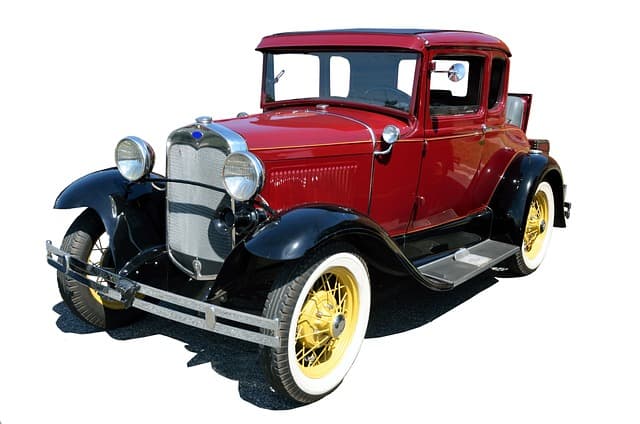Retro Car Insurance in Canada: How to Protect Your Vintage Vehicle

Owning a retro or classic car is more than just a hobby — it’s a passion and an investment. Whether you enjoy weekend drives or keep your vehicle for display, protecting its value is crucial. Unlike modern cars, vintage vehicles often require specialized insurance to cover their unique risks and higher restoration costs. Understanding how retro car insurance works can help ensure your prized possession is properly safeguarded for years to come.
Why Standard Insurance Isn’t Enough for Retro Cars
Standard auto insurance is designed for everyday vehicles, which makes it unsuitable for classic and retro cars. Unlike modern vehicles, vintage cars often appreciate in value over time, while standard policies typically calculate payouts based on depreciation. This could leave you significantly undercompensated in the event of theft or total loss.
Additionally, repairing a retro car often requires specialized parts and skilled mechanics, which may not be fully covered under a standard policy. Standard plans also assume frequent use, meaning your retro car’s occasional outings may qualify you for mileage-based discounts with specialized insurance.
Retro car insurance is designed to address these unique needs, offering tailored coverage that protects your vehicle’s true value. For collectors and enthusiasts, investing in proper coverage is essential to maintaining both financial security and peace of mind.
Choosing the Right Insurance Provider
Selecting the right insurer is crucial when protecting your classic or retro car. It’s important to choose a provider with experience in vintage vehicle insurance to ensure your coverage meets the unique needs of classic car ownership. For example, specialized providers often offer features like agreed value coverage and protection for rare parts.
If you’re searching for reliable options, consider exploring EV Vehicle Insurance, where providers may offer customized plans for EV and classic cars. Look for insurers that understand collector vehicles and provide flexible policies based on limited mileage, secure storage, and specialized repairs.
Before committing, review customer reviews, ask about coverage limits, and confirm how claims are handled for rare or hard-to-source parts. Partnering with the right insurer ensures your cherished retro car receives the protection it deserves.
Key Features of Retro Car Insurance
Retro car insurance policies are tailored to meet the unique needs of classic vehicle owners. These specialized policies go beyond standard coverage, offering features designed to protect both the car’s value and its distinct characteristics. Key features to look for include:
- Agreed Value Coverage: Unlike standard insurance, which calculates payouts based on depreciation, agreed value coverage ensures you receive a pre-determined amount reflecting your car’s true worth.
- Limited Mileage Discounts: Many insurers offer reduced rates if you drive your retro car only occasionally, such as for events or leisure drives.
- Spare Parts Coverage: Classic cars often require rare or custom-made parts; this feature helps cover the cost of sourcing and replacing them.
- Restoration Coverage: If you’re actively restoring your vintage vehicle, certain policies can protect it during the restoration process.
- Flexible Repair Options: Retro car insurance may allow you to choose specialized repair shops experienced in working with classic cars.
How to Qualify for Retro Car Insurance
To secure retro car insurance in Canada, your vehicle and circumstances must meet certain criteria. While requirements can vary between providers, there are some common qualifications to keep in mind.
Vehicle Age and Condition
Most insurers define a retro car as a vehicle that is at least 15 to 25 years old and maintained in good condition. Some policies may also require the car to be used primarily for recreational purposes rather than daily commuting.
Storage Requirements
Many insurance providers require classic vehicles to be stored in a secure garage or similar protected space when not in use. This helps reduce the risk of theft, vandalism, or weather damage.
Driving History
Insurers often expect applicants to have a clean driving record with minimal traffic violations or claims. Maintaining a responsible driving history can also help reduce premiums.
Documentation
To qualify, you may need to provide:
- Recent photographs of the vehicle.
- A certified appraisal to confirm the car’s value.
- Maintenance records to prove the vehicle’s condition and care.
Tips for Lowering Your Classic Car Insurance Premiums
While specialized insurance for retro cars offers valuable protection, there are ways to reduce your premiums without compromising coverage:
- Join a Classic Car Club: Many insurers offer discounts to members of recognized car clubs, as these groups often promote responsible ownership and safe driving habits.
- Limit Your Mileage: Since classic cars are often used less frequently, insurers may lower your premium if you commit to reduced annual mileage.
- Install Security Features: Adding anti-theft devices like alarms, steering wheel locks, or GPS trackers can reduce your risk profile and qualify you for discounts.
- Bundle Your Policies: Combining your classic car insurance with your home or standard auto policy may result in additional savings.
- Maintain a Clean Driving Record: Safe driving habits demonstrate responsibility, helping you secure lower rates over time.
Conclusion
In conclusion, retro car insurance is essential for protecting your vintage vehicle, but choosing the right coverage requires understanding its unique needs. By selecting the appropriate provider, considering key features, and following strategies to reduce premiums, you can ensure your classic car is properly safeguarded while keeping costs under control. Always take time to research and compare options to secure the best protection for your prized possession.
